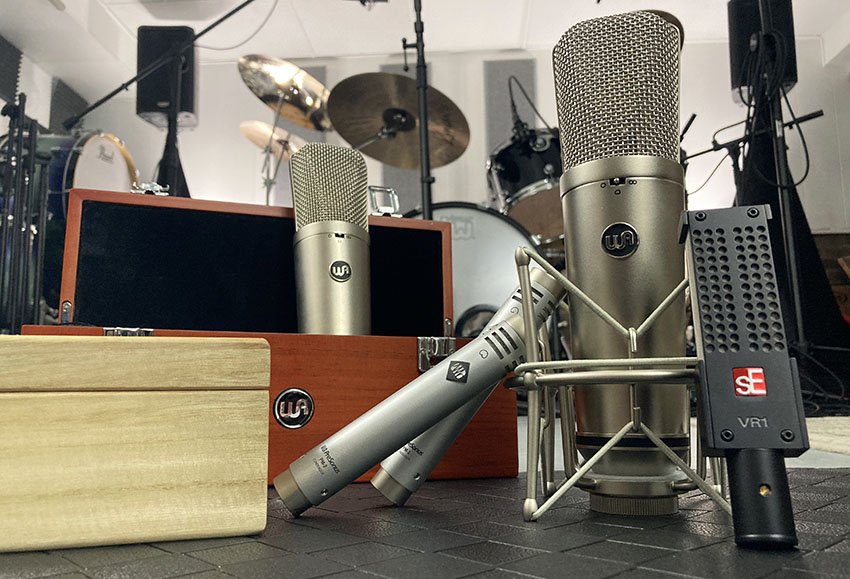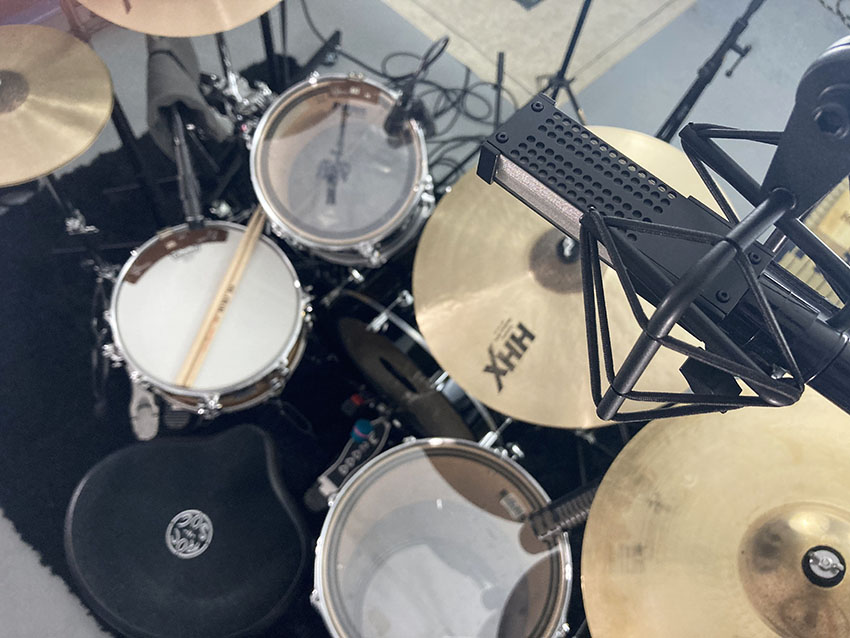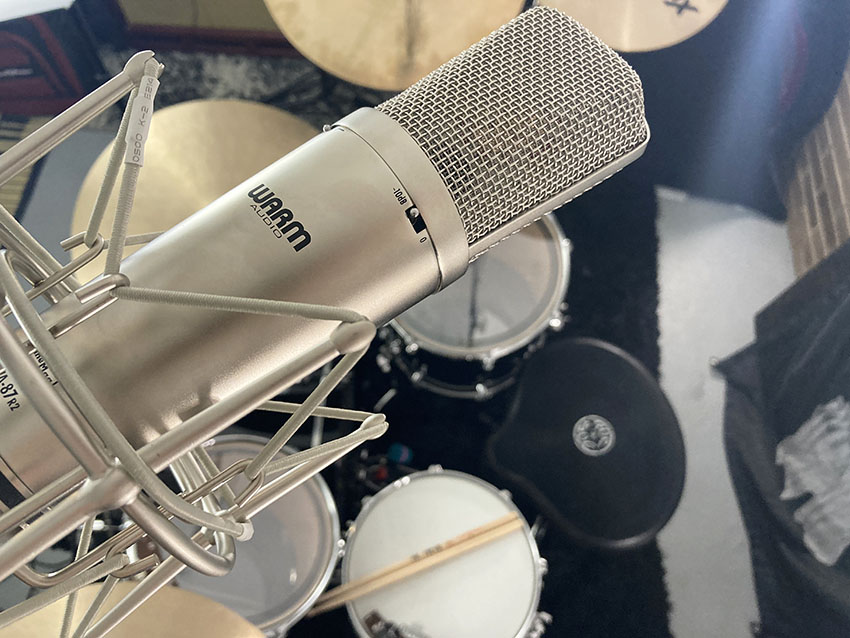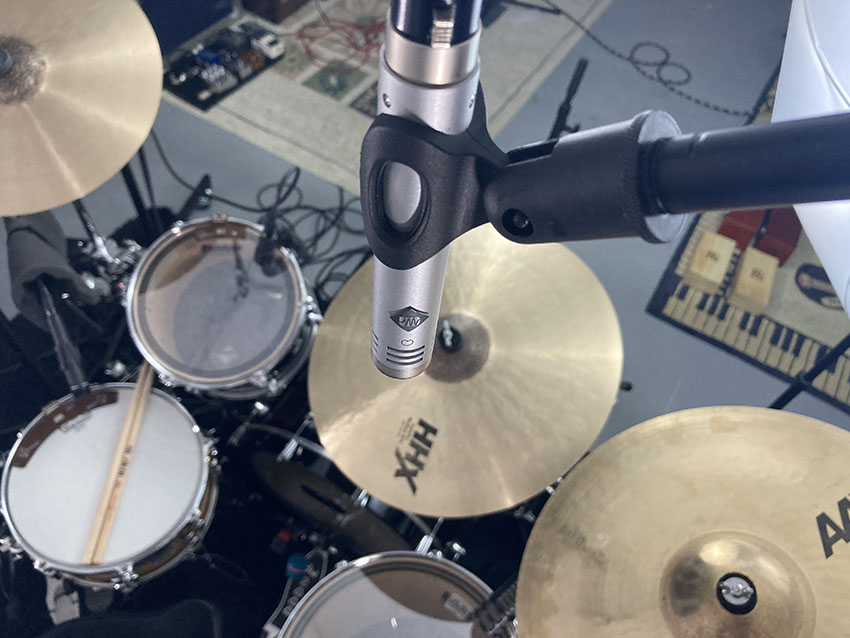Let’s face it, we can’t all have microphone lockers filled to the brim with every modern and vintage mic option available. Most of us find a pair of decent overhead mics and stick with them forever, or at least until that sweet, sweet upgrade comes around. Today in studio we’ll be looking at three distinctly different mic options for drum overheads: a pair of small-diaphragm pencil condensers, large-diaphragm condensers, and figure-8 polar pattern ribbon mics. Each of these mic pairings offer vastly different results when capturing a drum kit, and you really can’t know what fits your studio until you’ve heard each.
We’ll hear full kit mixes with each pairing, along with isolated (overheads only) stereo tracks from each mic pairing. To keep this as consistent as possible, each overhead pairing will be un-colored by compression, EQ, or anything else (even on full mixes) and placed the exact same distance (snare to capsule/ribbon) as each other.
Why the Ribbon?
Ribbon microphones use an electrically conductive ribbon placed between the poles of a magnet to produce a voltage. This ribbon vibrates and the voltage is inducted at right angles to the ribbon velocity and magnetic field created. Ribbon microphones are known for their fantastic level of warmth and unique articulation of sound. Besides their usefulness as drum overheads, ribbon mics also sound great on guitar cabinets, pianos, and even as room mics.
For our ribbon mic overheads drum take, we’ve employed the sE Electronics VR1 VooDoo ribbon microphone. These little mics pack a huge punch, with full frequency response from 20Hz to 20kHz. This is a true “secret weapon” in your studio and works like a charm overhead.
Large-and-in-Charge Diaphragm
Next up we have an old standby: the large-diaphragm condenser microphone set to a cardioid polar pattern. The condensers we’ve gone with is a pair of Warm Audio WA-87 R2 condenser mics. These FET 87-style mics offer an authentic “vintage” sonic experience that delivers crystal clear top-end while retaining a bit of punch from your snare and kick drum. The WA-87 is a fantastic option for the sheer fact that it replicates a 1960s era microphone down to the component level that just isn’t typically affordable for the average musician. You can have your cake and eat it too with Warm Audio‘s version.
We’ve set the mics with a -10db pad (with a switch located on the rear under the capsule) as well as keeping the frequency response flat in order to capture the kit’s full sonic picture. Speaking of frequencies, the WA-87 offers a full spectrum from 20Hz to 20kHz, just like our VR1 ribbons.
I’ve Got My Pencil!
Small-diaphragm pencil condensers are a great all-around tool to have in your studio space. They’re lightweight, can be used to great success on virtually any acoustic instrument or speaker cabinet, and aren’t just good as overheads on a drum kit. You can place them over your ride cymbal or hi-hat for increased stick articulation, along with other single drum applications. This makes them a great investment: you won’t throw them out if you buy new mics in the future, you’ll simply use them on something else around the kit!
Today we’re using a matched pair of PreSonus PM-2 pencil condensers. Each of these boasts a FET preamp just like our WA-87s, but the low-end of our frequency spectrum suffers a bit. Each PM-2 offers from 40Hz to 18kHz, so a bit of roll-off on each end of the spectrum. See if you notice this in our track demos compared to the other two mic pairings.
Choosing your overhead mic pairings is never easy. With the wealth of options available, whether to get a matched pair from one brand or building the pair out yourself, and getting something that’s in-budget, it can be a little overwhelming. I hope you can take these sound demos into consideration when shopping for mics that work for you. And don’t forget that these three options aren’t the end all, be all. There are many more mic types, different sonic characteristics, and maybe even a few unconventional options that could work better for you. Keep experimenting and never stop making music.







Leave a Reply